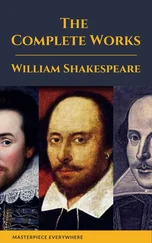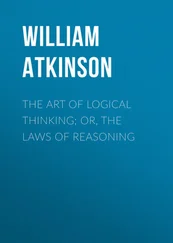About 1878 John Sambrook, of England, taught and published a system which among other things stated the principle that figures could be easily memorized by the use of words whose vowels corresponded in sound to the numerals. He called attention to the fact that the vowel sound of each figure was different from that of another with the exception of the long sound of “I,” which occurs in the words “five” and “nine.” his last conflict of sounds he remedied by giving the short sound of “I” to “nine,” considering it as if it were pronounced “ nin .” He constructed from this principle a most ingenious system of memorizing numbers. The following words will give an idea of the words to be used in memorizing numbers from 1 to 9, it being remembered, of course, that any word of the same sound would answer as well as any of the words here used.
| 1 |
2 |
3 |
4 |
5 |
6 |
7 |
8 |
9 |
| Gun. |
Tooth. |
Tree. |
Floor. |
Hive. |
Stick. |
Sexton. |
Gate. |
Pin. |
In memorizing 1492 (Columbus’ Discovery of America) a sentence would have to be constructed having some reference to Columbus, in which the words, Gun, Floor, Pin, Tooth, appeared in their above order, or a word would have to be found in which these vowel sounds appeared in the same order, etc., etc. Interesting, but scarcely useful as a memory developer.
The Shedd system gives as an easy method of memorizing dates, the plan of forming a word or sentence, the number of letters of which correspond to the number to be remembered. Thus to remember that Rome was burned in the year 64 one must remember the sentence “Burned Rome,” the first word of which contains six letters and the second four. Napoleon’s birth (1769) would be recalled by the sentence, “A strange, mighty conqueror,” and his defeat at Waterloo (1815) by the sentence, “A Waterloo I found.”
Other writers have promulgated systems by which events, subjects, rules, dates, etc., are readily remembered by doggerel rhymes. Some well known examples are here given:
THE MONTHS.
“Thirty days hath September,
April, June and November,” etc., etc.
PARTS OF SPEECH.
Three little words you often see
Are Articles a , an and the . A Noun’s the name of any thing, As school , or garden , hoop or swing . Adjectives show the kind of noun, As great , small , pretty , white , or brown . Instead of nouns, the pronouns stand, Her head, his face, your arm, my hand. Verbs tell us something to be done, To read , count , laugh , sing , jump or run . How things are done, the adverbs tell; As slowly , quickly , ill or well . Conjunctions join the words together, As men and women, wind or weather. The Preposition stands before A noun, as in , or through , the door. An Interjection shows surprise, As Oh! how pretty— Ah! how wise. The whole are called nine parts of speech , Which reading, writing, spelling, teach.
“SHALL” AND “WILL.”
In the first person simply shall fortells,
In will a threat or else a promise dwells. Shall in the second and third doth threat, Will simply then fortells the future feat.
ENGLISH SOVEREIGNS.
First William the Norman,
Then William, his son;
Henry, Stephen and Henry,
Then Richard and John,
Next Henry the third,
Edwards, one, two and three;
And again, after Richard,
Three Henrys we see.
Two Edwards, third Richard,
If rightly I guess;
Two Henrys, sixth Edward.
Queen Mary, Queen Bess.
The Jamsie the Scotchman,
Then Charles whom they slew,
And then, after Cromwell,
Another Charles too.
Next Jamsie the second
Ascended the throne;
Then William and Mary
Together came on.
Then Anne, four Georges,
And fourth William past,
Then came Queen Victoria,
Now Edward is last.
In our chapter on the Memory of Dates we have given further examples of this kind of doggerel, which may be used occasionally as an easy means of connecting names, events, etc. Law students and medical students have a number of rhymes of this kind by which they group parts of their studies, definitions, etc.
The “figure alphabet” is sometimes used to accomplish “trick memorizing” in this way: A number of figures, one hundred or more, are written down and the slip handed to a friend. The writer then rapidly calls them off. He repeats the trick with different figures as often as desired. The explanation lies in the fact that he has memorized the “figure alphabet,” and taking the words of some well known song or poem, he translates the letters into figures which are marked down. To recall the figures, he simply does mentally that which he has just done on paper, and translating the same words into figures, he of course repeats what he had previously written down. It is very simple, but quite effective as a trick.
The law of association is sometimes used to easily join together for the purpose of recollection different things having some relation to each other. Thus Dr. Watts coined the word vibgyor as a means of easily remembering the names and order of the primary colors, the initial letter of each color, in their proper order, forming the said word, thus, Violet, Indigo, Blue, Green, Yellow, Orange, Red. The word news is composed of the initial letters of the four points of the compass, thus: North, East, West, South. The name of the vicepresident who first served with Lincoln, may be remembered by thinking of Lincoln’s name in this form: abrahamlincoln. Franklin Pierce was the fourteenth president, which fact may be remembered by his initials F (ourteenth) P (resident). We recite these things merely to show how many ways there are whereby one may remember things by attaching them to “pegs.” The great trouble is that, while a few things may be remembered in this way, it is generally harder to remember the “pegs” than the things themselves, after one has burdened himself with a number of them. They are artificial, and Nature in the end revolts.
Looking back it will seem that the plan of Simonides, or the “topical system” as it is sometimes called, was the first in the field, and still shows signs of life. Then came the “figure alphabet,” which is still very much with us, in a much improved form, and elaborated almost out of resemblance. The latter is quite fascinating at the start, but a little later on—well, just try it. The plan of memorizing a date by words containing a certain number of letters corresponding to figures to be memorized, looks easy, but one soon tires of it—and you are apt to get your words mixed, thereby mixing your centuries. Very artificial! The third in order, the “associative” or “correlative” method, is interesting, but is apt to bring on mental dyspepsia if used as a steady diet by the memory. Even if these systems were practicable, they would do little more than to aid in the memory of dates , leaving the development of the other faculties of the mind to other methods.
The better plan is to develop the several faculties, to the end that they may readily receive impressions, and retain them, and by practice to so train the recollection that previously received impressions may readily be revived. We have tried to point out the way in this book, and we trust that everyone who has read its pages will put into practice the principles therein taught.
FINIS.
Читать дальше












